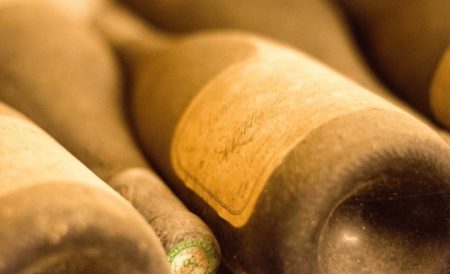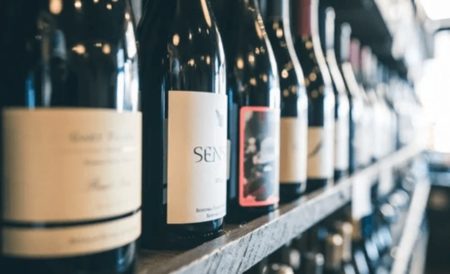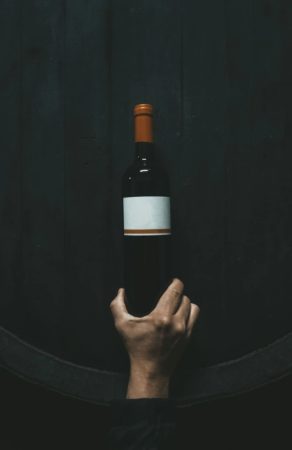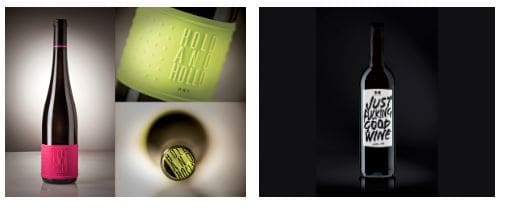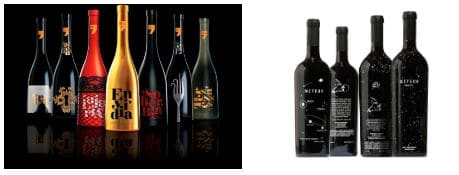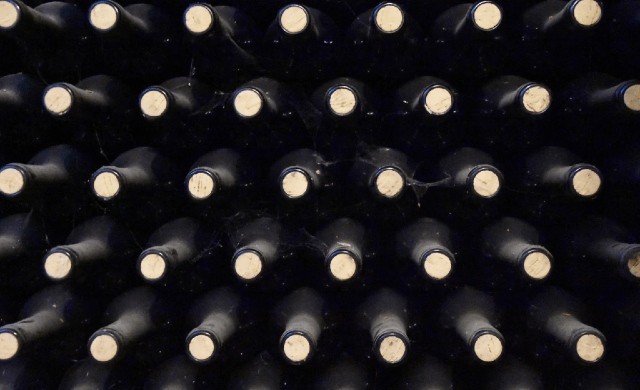
30 Mar What wine labels tell us
The label is the adornment that dresses up a bottle the most, that which identifies and presents the wine at a glance. It is the bearer of the brand, its history…and this is why it is so thrilling to discover its origins, which began many years ago …
Wine labels: the origin
The beginnings of wine labeling go back to the 18th century, where Egyptians labeled their wines by specifying the vintage, the area where it was produced and the person who produced it – the enologist. The first ones were made in monasteries due to the need for wine in the Christian sacraments, and the first hand-written label is attributed to the monk Pierre Perignon, a label made out of parchment and which was placed on the neck of the bottle with a piece of string.
At first, it was only the information that was important for the label. It was not until the 20th century that people began to consider the esthetics of the labels themselves, thanks to the techniques offered by the printing press.
With the passing of time, labels from many sectors have evolved with regard to their materials as well as creativity, but wine labels are largely impervious to change.
In fact, some brands have not changed their material and/or design in years. A great example of this is Marqués de Cáceres. Its design was created 50 years ago by a group of creative New Yorkers, and up to the present day it has hardly changed at all. The reason behind this? Its owners want to strengthen the image of the brand sustained by an efficient marketing policy and a discreet communication strategy based on the prestige of the product’s quality.
What wine labels tell us
If a product didn’t have a label, would you trust it? The label gives us the assurance of knowing what we are buying.
Wine labels supply a lot of information about the product and make the consumer’s choice easier. The following detailed information must appear on them: the product category (wine, sparkling wine, semi-sparkling wine, etc.), its origin, the alcoholic content (expressed in percentage), the bottler, the volume (bottle capacity), the lot number and the presence of any allergens.
Additionally, many wines add further information considered as not obligatory, such as: the vintage year, the grape variety or varieties, the production methods, etc., and in some cases they include a back label to explain the history of the winery, give serving suggestions for food and wine matching and include the logo of the designation of origin. The more information, the better. This way the consumer feels more informed and can choose a wine with greater certainty.
But information is not everything. How would a consumer choose a wine if the label only contained the information about the harvest, the area where it was produced and the enologist? We all agree that the choice would be much more difficult and boring. It would surely lead to a lot of fiascos. For this reason, design and the possibility of making labels more attractive have flooded supermarket shelves, bars and restaurants, to the point of over-saturation and making the choice increasingly difficult.
With so many elements at play, the consumer often chooses based on a ‘catchy name,’ striking colors or symbols of prestige that appear on the packaging. But is this a conscious choice? Sometimes something pushes us to take a decision to purchase and we are unaware of the reason, since our subconscious perception plays a weighty part in the final decision during the acquisition of a determined product.
The relationship between a wine and the consumer starts with the label
The label is a wine’s identity and its guarantee, since it is the only information that the consumer has, wherefore it becomes the commercial weapon.
But not all consumers look for the same thing in a label. Wine enthusiasts will look for everything that will allow them to enjoy a good wine. Occasional wine drinkers, on the other hand, will look for reference elements, terminology, logos or familiar images that give them the feeling that they are purchasing a quality product. For all these reasons, wineries try to distinguish their image and representation from the rest, being original in their design as well as in conception, since the better dressed the bottle, the better it will show off its personality.
According to a Nielsen study, “a wine risks its relevance and attractiveness to the customer in the mass market in barely seven seconds.” It has been shown that more than half of all purchase decisions are made in front of the supermarket shelf, at the precise moment of purchasing. That is why it is vitally important for brands to identify the values that build their identity and those that stand out against the rest on the packaging and/or the label.
Another important piece of information from the Nielsen study is that two out of every three users worldwide say that they pay more attention to labels now than two years ago. However, it also informs us about the problems faced by almost half of all consumers (45%) when trying to understand what they read on the label. It is therefore even more important to create a good design, since as the saying goes: “The first bottle is sold by the designer, the second one by the enologist.”
The latest trend in labels: provocation
With everything we have already mentioned, the current market is full of good examples of wine labels that base their commercial promotion on provocation and visual impact.
Below are 4 examples. Which one is your favorite?
- Hold and Hollo: with colors and a material that distance themselves from classic labels, the brand Hold and Hollo won the competition of the Moon Valley Wines winery with this design.
- Just F* Good Wine: the provocative message and typeface represent a quite unconventional punk mentality.
- Meteor Merlot: this design by Work Labs imitates a star-filled night sky. The shape, position and size of the stars vary, as they appear to float through space, making each bottle unique.
- 7 Pecados: this series of labels addresses the seven deadly sins: wrath, greed, lust, envy, pride, gluttony, and sloth. With these designs it is difficult not to give in to temptation.
What does Rieusset do in this regard?
At Rieusset we are experts in making labels for food, labels for drinks (especially beer, water and soft drinks) and labels for the sectors of hygiene, tobacco and pharmacy.
From our 150 years of experience, we know about the importance of research, innovation and business productivity in order to develop new solutions that anticipate and/or adapt themselves to market trends.
For this reason, we are aware of the opportunities available to manufacturers, wineries and wine label designers… to innovate and set themselves apart from their competitors in a sector which is so particularly traditional as this one. Furthermore, wine is related to social activities that facilitate consumption among younger adults. This is a target group that without a doubt has a higher predisposition toward more daring and fresher proposals that pave the way for agencies to unleash their unlimited creativity.
Here at Rieusset, we make our experience and resources available to this industry in order to drive this sector towards change and modernization. How? Through emerging technologies such as linerless, sleeves or the personalization of labels with digital printing.
Do you need a label for your wine? Would you like to plunge into change?
Contact us to design your best calling card.
| We Manufacture: | Meet Rieusset: |



